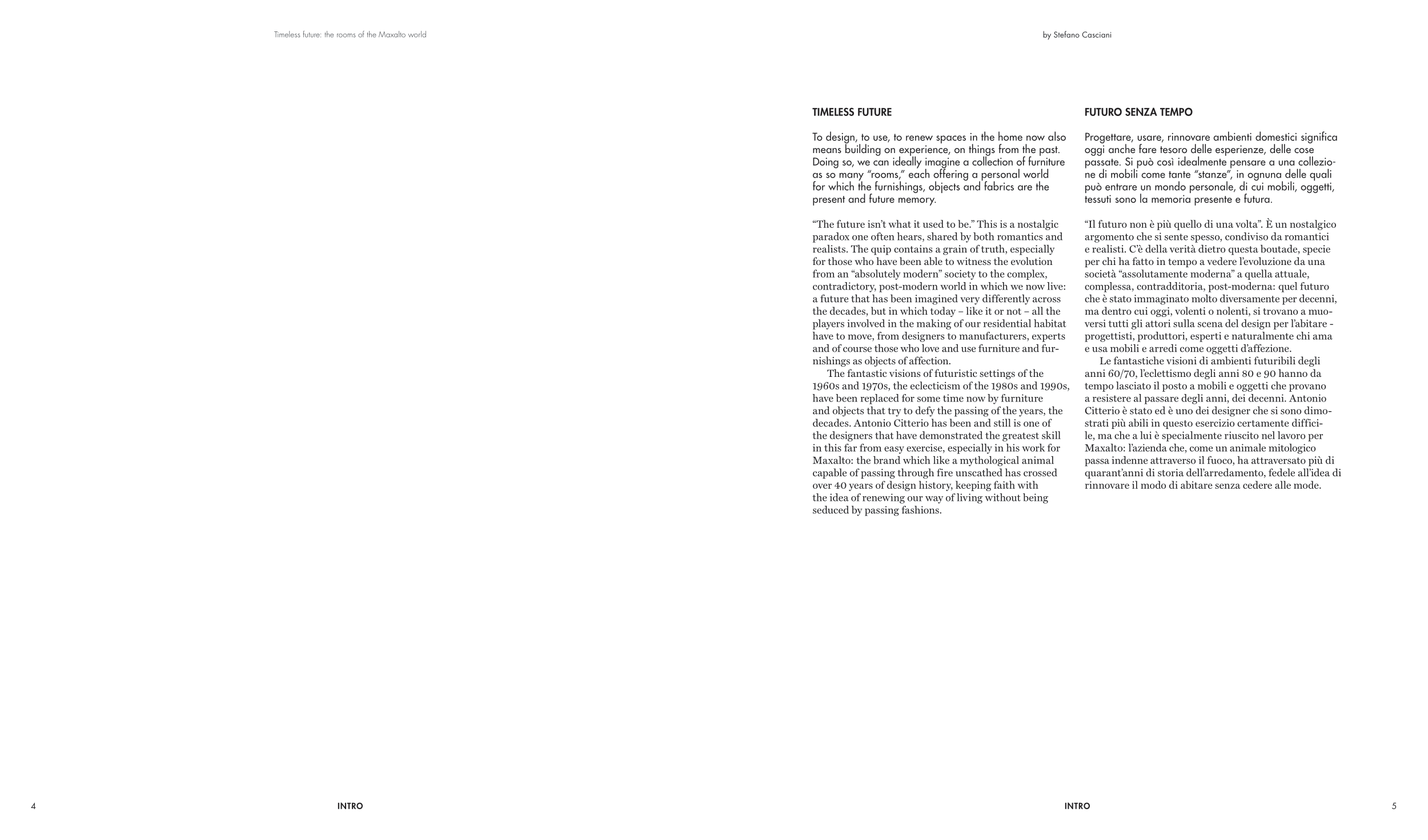4
5
INTRO
INTRO
by Stefano Casciani
TIMELESS FUTURE
To design, to use, to renew spaces in the home now also
means building on experience, on things from the past.
Doing so, we can ideally imagine a collection of furniture
as so many “rooms,” each offering a personal world
for which the furnishings, objects and fabrics are the
present and future memory.
“The future isn’t what it used to be.” This is a nostalgic
paradox one often hears, shared by both romantics and
realists. The quip contains a grain of truth, especially
for those who have been able to witness the evolution
from an “absolutely modern” society to the complex,
contradictory, post-modern world in which we now live:
a future that has been imagined very differently across
the decades, but in which today – like it or not – all the
players involved in the making of our residential habitat
have to move, from designers to manufacturers, experts
and of course those who love and use furniture and fur-
nishings as objects of affection.
The fantastic visions of futuristic settings of the
1960s and 1970s, the eclecticism of the 1980s and 1990s,
have been replaced for some time now by furniture
and objects that try to defy the passing of the years, the
decades. Antonio Citterio has been and still is one of
the designers that have demonstrated the greatest skill
in this far from easy exercise, especially in his work for
Maxalto: the brand which like a mythological animal
capable of passing through fire unscathed has crossed
over 40 years of design history, keeping faith with
the idea of renewing our way of living without being
seduced by passing fashions.
FUTURO SENZA TEMPO
Progettare, usare, rinnovare ambienti domestici significa
oggi anche fare tesoro delle esperienze, delle cose
passate. Si può così idealmente pensare a una collezio-
ne di mobili come tante “stanze”, in ognuna delle quali
può entrare un mondo personale, di cui mobili, oggetti,
tessuti sono la memoria presente e futura.
“Il futuro non è più quello di una volta”. È un nostalgico
argomento che si sente spesso, condiviso da romantici
e realisti. C’è della verità dietro questa boutade, specie
per chi ha fatto in tempo a vedere l’evoluzione da una
società “assolutamente moderna” a quella attuale,
complessa, contradditoria, post-moderna: quel futuro
che è stato immaginato molto diversamente per decenni,
ma dentro cui oggi, volenti o nolenti, si trovano a muo-
versi tutti gli attori sulla scena del design per l’abitare -
progettisti, produttori, esperti e naturalmente chi ama
e usa mobili e arredi come oggetti d’affezione.
Le fantastiche visioni di ambienti futuribili degli
anni 60/70, l’eclettismo degli anni 80 e 90 hanno da
tempo lasciato il posto a mobili e oggetti che provano
a resistere al passare degli anni, dei decenni. Antonio
Citterio è stato ed è uno dei designer che si sono dimo-
strati più abili in questo esercizio certamente diffici-
le, ma che a lui è specialmente riuscito nel lavoro per
Maxalto: l’azienda che, come un animale mitologico
passa indenne attraverso il fuoco, ha attraversato più di
quarant’anni di storia dell’arredamento, fedele all’idea di
rinnovare il modo di abitare senza cedere alle mode.
Timeless future: the rooms of the Maxalto world


